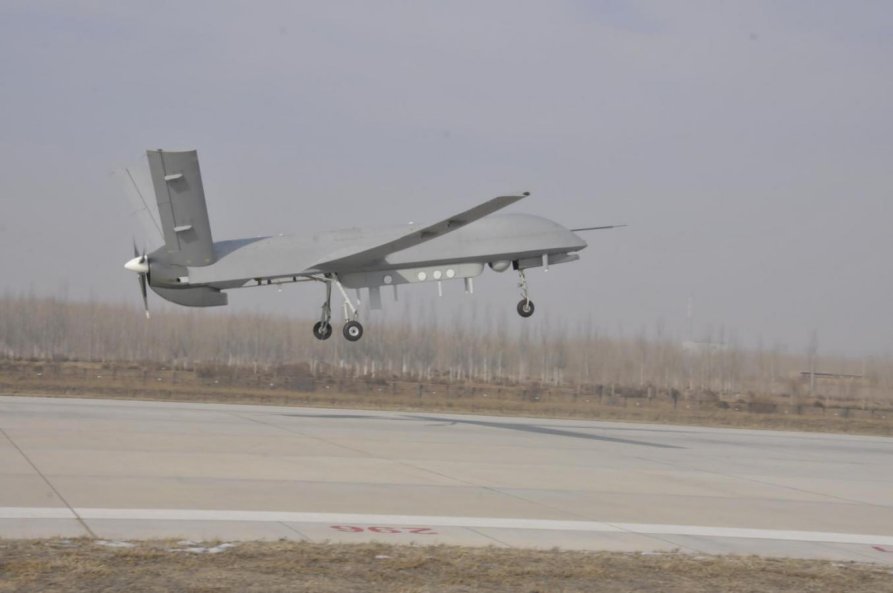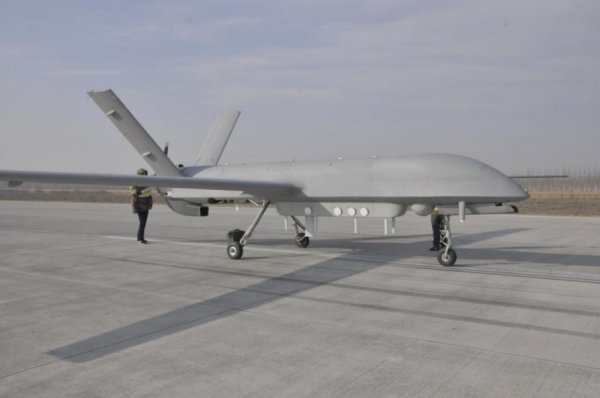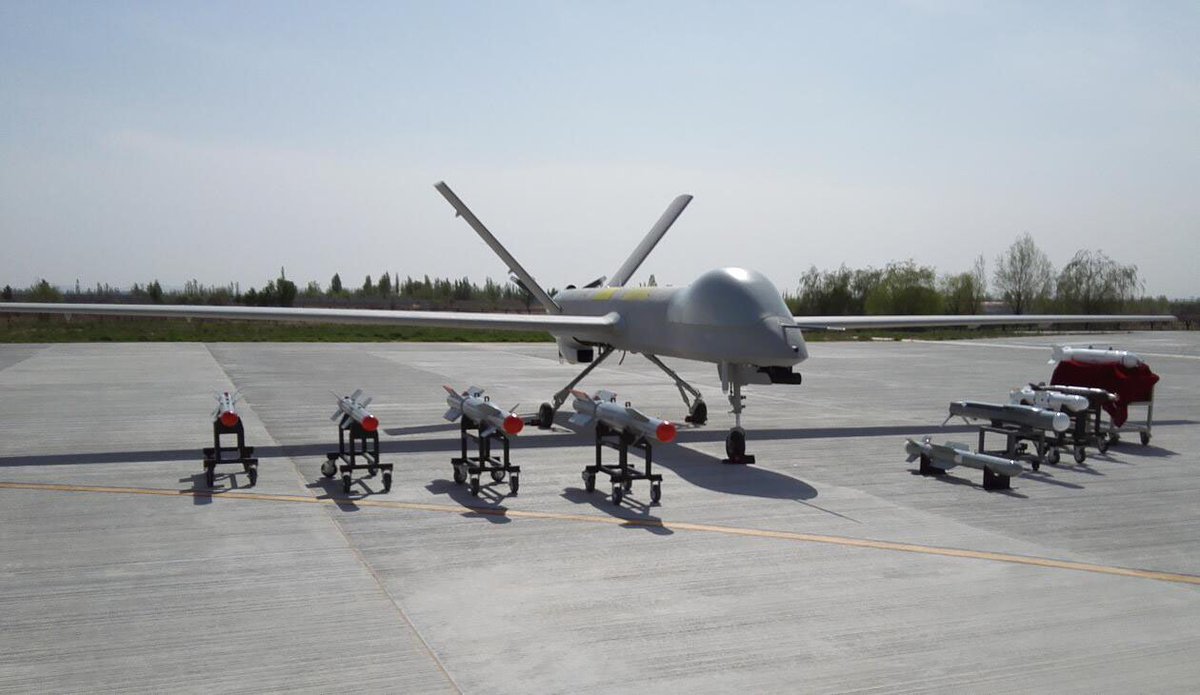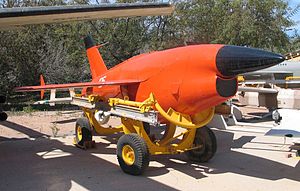Hendrik_2000
Lieutenant General
They really want to sell this UAV and give unprecedented access to media and for the first time we have a look at the office of institute 611 where all the good stuff like J10, J20, JF17 wingloong come from. This article also tell the participation of large number of private company in design and development of WingloongII
On the final assembly line of Wing Loong II drones
BY
Chengdu, a Chinese metropolis of 10 million inhabitants with its history dating back at least to the fourth century BC. AD, it is also here that we find the "nests" ¹ of the 611 Institute, one of the largest aeronautical military design offices of the AVIC group, and also the Factory 132 CAC where the FC-1 / JF-17, J-10, J-20 and Wing Loong military drones are assembled.
Some give the nickname "Bird's Nest" at the site of the 611 Institute in Chengdu

After the Wing Loong drone development conference held last Wednesday in the city, which brought together a large number of private companies participating in the program, the local media were able to visit the places where drones are integrated and tested. , a privilege that had been reserved only on national CCTV television so far.
Wing Loong I and II on the final assembly line in Chengdu (Image: CCTV)
Entered the hangar, six Wing Loong II in gray deliveries are waiting for disassembly to be packaged and shipped abroad. The largest model of the Chinese drone family has already registered more than 100 aircraft in its export backlog, some even before its maiden flight which took place in February 2017.
According to the line manager, the production of a Wing Loong drone should go through ten different standard steps, ranging from "Cell component manufacturing", "Structural component integration", "Fixed point work", "Laying of electrical harnesses "," Pipe Installation "," Propulsion System Installation "," System Integration "," Individual Testing "," Integrated Testing ", and" Factory Test Flight ".
The final assembly site, "paperless", handles the activities from "Fixed Point Work" which will last two weeks on one machine, plus two more weeks for the integration of different systems, one week of tests and a week of test flights. On average, two and a half months are needed to complete the final assembly and launch a new Wing Loong II drone.
Also according to the same person in charge of the production line, the Wing Loong drones (I and II) are currently used by five different user countries, without however naming them or specifying if they are only export customers. But at least we know that China, Kazakhstan, Saudi Arabia, the United Arab Emirates and Egypt already have Wing Loong among the ranks.
The 611 Institute and the 132 CAC Plant manage more than 100 external suppliers today for the supply of the 130 subsystems of a Wing Loong II drone. The production line today has a hundred or so staff, mostly engineers, for a current production rate of 24 aircraft per year.
Chinese aircraft manufacturers plan to to increase their design and production capacity, and reach the rate 30 in the near future in Chengdu.
But both private and national actors, such as Xin Jing Aviation (鑫 旌 航空) on one side and GAIC of the AVIC group on the other, have already joined the program, especially on the final assembly part, in order to satisfy the increasing demands of customers in terms of number of devices and delivery time.
At the other side of the assembly hall are flight test teams and several "containers" in desert camouflage. According to an interview with a flight test engineer, each ground station contains six positions, two for mission managers and two for pilots. Two drones can be controlled simultaneously by a single station at a distance of 200 km in LOS, or several thousand kilometers in satellite communication mode.
The journalists were also able to look closely at the "eye" of the drone, an optronic ball with four (?) Optical channels, including IR and laser tracks. The exact model remains unknown but it is similar to Loong Eye LE500 developed by a subsidiary of the AVIC group.
Some optronic balls offered by the AVIC export group
Henri K.
On the final assembly line of Wing Loong II drones
BY
Chengdu, a Chinese metropolis of 10 million inhabitants with its history dating back at least to the fourth century BC. AD, it is also here that we find the "nests" ¹ of the 611 Institute, one of the largest aeronautical military design offices of the AVIC group, and also the Factory 132 CAC where the FC-1 / JF-17, J-10, J-20 and Wing Loong military drones are assembled.
Some give the nickname "Bird's Nest" at the site of the 611 Institute in Chengdu

After the Wing Loong drone development conference held last Wednesday in the city, which brought together a large number of private companies participating in the program, the local media were able to visit the places where drones are integrated and tested. , a privilege that had been reserved only on national CCTV television so far.
Wing Loong I and II on the final assembly line in Chengdu (Image: CCTV)
Entered the hangar, six Wing Loong II in gray deliveries are waiting for disassembly to be packaged and shipped abroad. The largest model of the Chinese drone family has already registered more than 100 aircraft in its export backlog, some even before its maiden flight which took place in February 2017.
According to the line manager, the production of a Wing Loong drone should go through ten different standard steps, ranging from "Cell component manufacturing", "Structural component integration", "Fixed point work", "Laying of electrical harnesses "," Pipe Installation "," Propulsion System Installation "," System Integration "," Individual Testing "," Integrated Testing ", and" Factory Test Flight ".
The final assembly site, "paperless", handles the activities from "Fixed Point Work" which will last two weeks on one machine, plus two more weeks for the integration of different systems, one week of tests and a week of test flights. On average, two and a half months are needed to complete the final assembly and launch a new Wing Loong II drone.
Also according to the same person in charge of the production line, the Wing Loong drones (I and II) are currently used by five different user countries, without however naming them or specifying if they are only export customers. But at least we know that China, Kazakhstan, Saudi Arabia, the United Arab Emirates and Egypt already have Wing Loong among the ranks.
The 611 Institute and the 132 CAC Plant manage more than 100 external suppliers today for the supply of the 130 subsystems of a Wing Loong II drone. The production line today has a hundred or so staff, mostly engineers, for a current production rate of 24 aircraft per year.
Chinese aircraft manufacturers plan to to increase their design and production capacity, and reach the rate 30 in the near future in Chengdu.
But both private and national actors, such as Xin Jing Aviation (鑫 旌 航空) on one side and GAIC of the AVIC group on the other, have already joined the program, especially on the final assembly part, in order to satisfy the increasing demands of customers in terms of number of devices and delivery time.
At the other side of the assembly hall are flight test teams and several "containers" in desert camouflage. According to an interview with a flight test engineer, each ground station contains six positions, two for mission managers and two for pilots. Two drones can be controlled simultaneously by a single station at a distance of 200 km in LOS, or several thousand kilometers in satellite communication mode.
The journalists were also able to look closely at the "eye" of the drone, an optronic ball with four (?) Optical channels, including IR and laser tracks. The exact model remains unknown but it is similar to Loong Eye LE500 developed by a subsidiary of the AVIC group.
Some optronic balls offered by the AVIC export group
Henri K.
Last edited:






